Nature’s Cure: Using Biophilic Design to Enhance Healing
The typical approach to architectural design tends to silo building and landscape architecture, treating the two as separate entities.
Over time, this dissociation in design has had a negative impact on both humans and the natural environment. In the healthcare field, the latest technological advances in medicine are often the innovations that receive the greatest amount of attention. However, incorporation of much more basic human needs—ones that are found deeply embedded in our genetic code—carry valuable weight in the design of healthcare facilities.
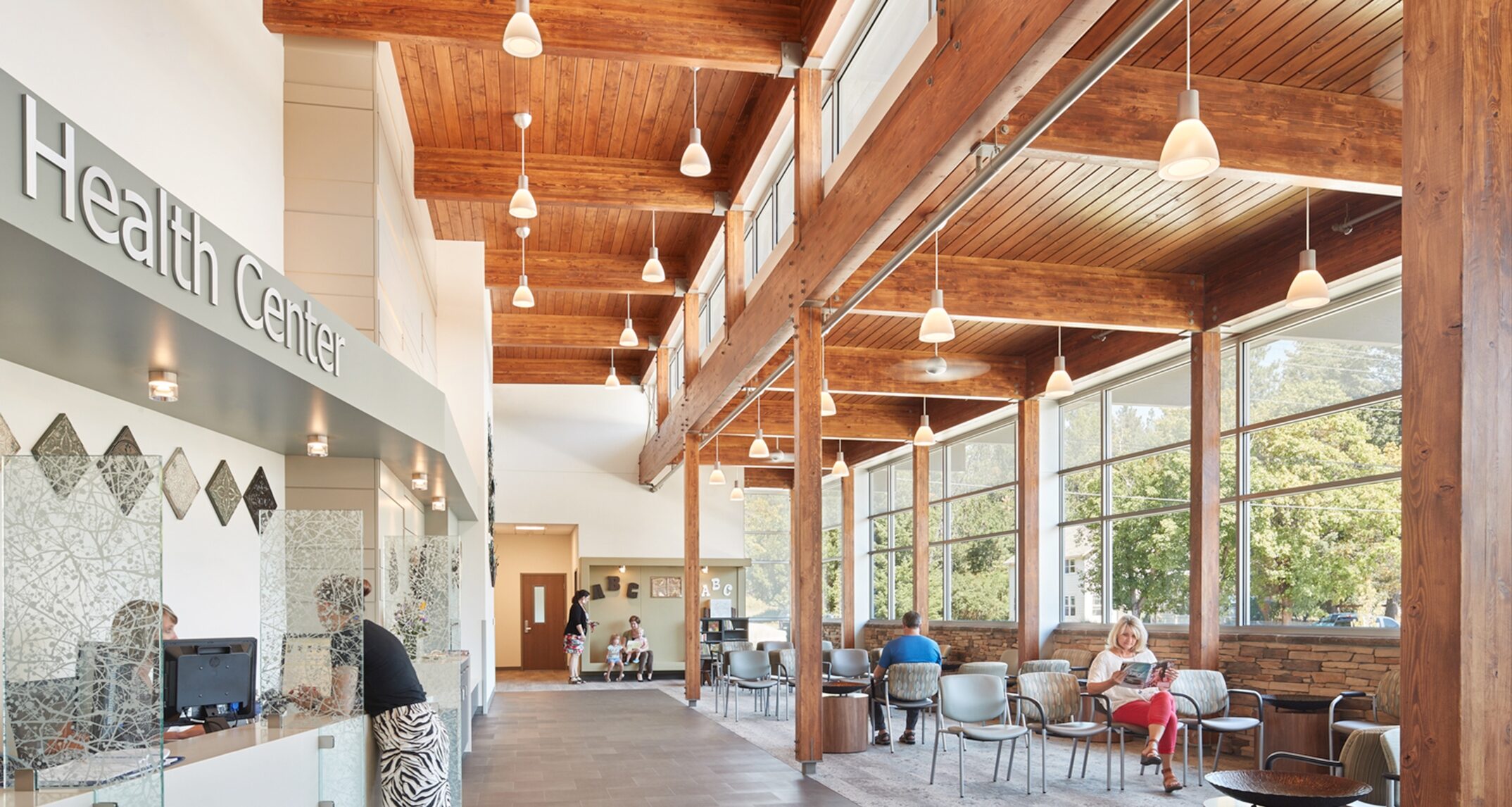
Large windows in the lobby provide a visual connection to nature, while the deliberate use of finishes and patterns serve to mimic the natural environment. Newport Hospital Health Center – NAC Architecture
Patients and Biophilic Design
Oftentimes when one is asked to describe a healthcare setting, words like “sterile,” “hygienic,” and “antimicrobial” tend to come to mind; there is good reason doctors wear pristine white lab coats. Some of the most commonly contaminated surfaces in healthcare settings include bed privacy curtains, computer keyboards, blood pressure cuffs, and furniture.1 While these factors are important to environments that successfully heal patients, many other highly beneficial assets are overlooked. These assets are not hard to find; they are an inherent part of each and every human on the planet.
Biophilic design describes a tactic that stems from the term biophilia, coined by biologist and Harvard University Professor Edward O. Wilson as “the innate tendency to focus on life and the lifelike processes.”2 Dr. Stephen R. Kellert defines biophilic design as “an innovative approach that emphasizes the necessity of maintaining, enhancing, and restoring the beneficial experience of nature in the built environment.”3
While every population demographic—from early childhood education settings to the corporate work force—can benefit from biophilic design, another particular user group experiences significant added benefit from this intrinsic design methodology. Healthcare patients, particularly those in hospitals, have substantial healing benefits when they are exposed to environments that incorporate principles of biophilia into their architecture and interior design. Exposure to natural elements, whether they are directly from nature or interpretations of it, aid in the healing process of patients.
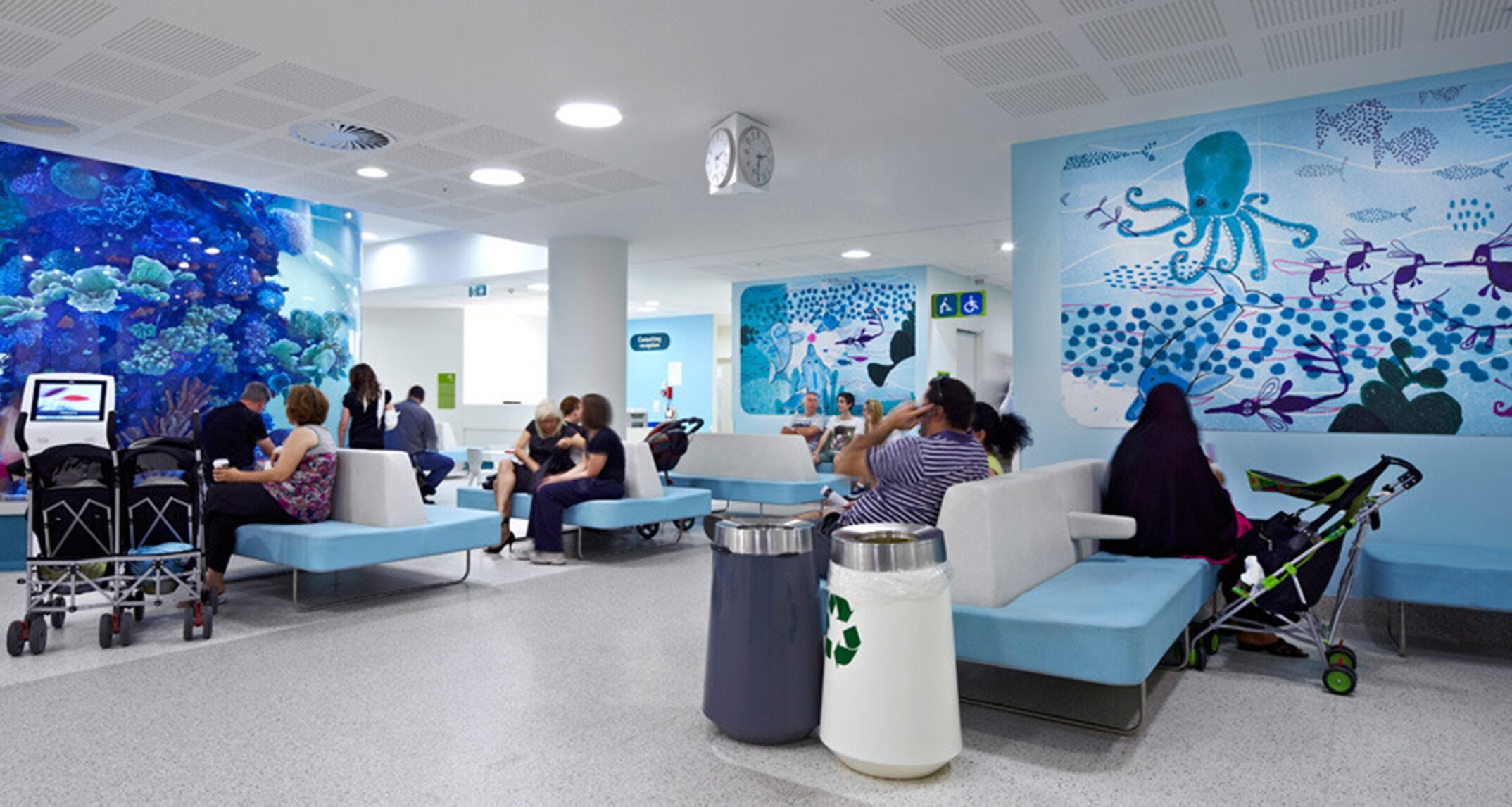
Including features like aquariums has been linked to lower patient anxiety levels in healthcare settings. Royal Children’s Hospital - Billard Leece Partnership/Bates Smart
Research supports that when patient rooms have views of nature, postoperative stays are generally shorter, less pain medication is dispensed, and overall condition improves. Evidence shows that representational images of natural features such as landscapes, gardens, and waterscapes can reduce stress and improve results like pain relief.4 One study by researchers Katcher, Segal, and Beck found that patients waiting to undergo dental surgery exhibited lower anxiety levels when an aquarium of fish was present in the waiting area as opposed to when the aquarium was absent.
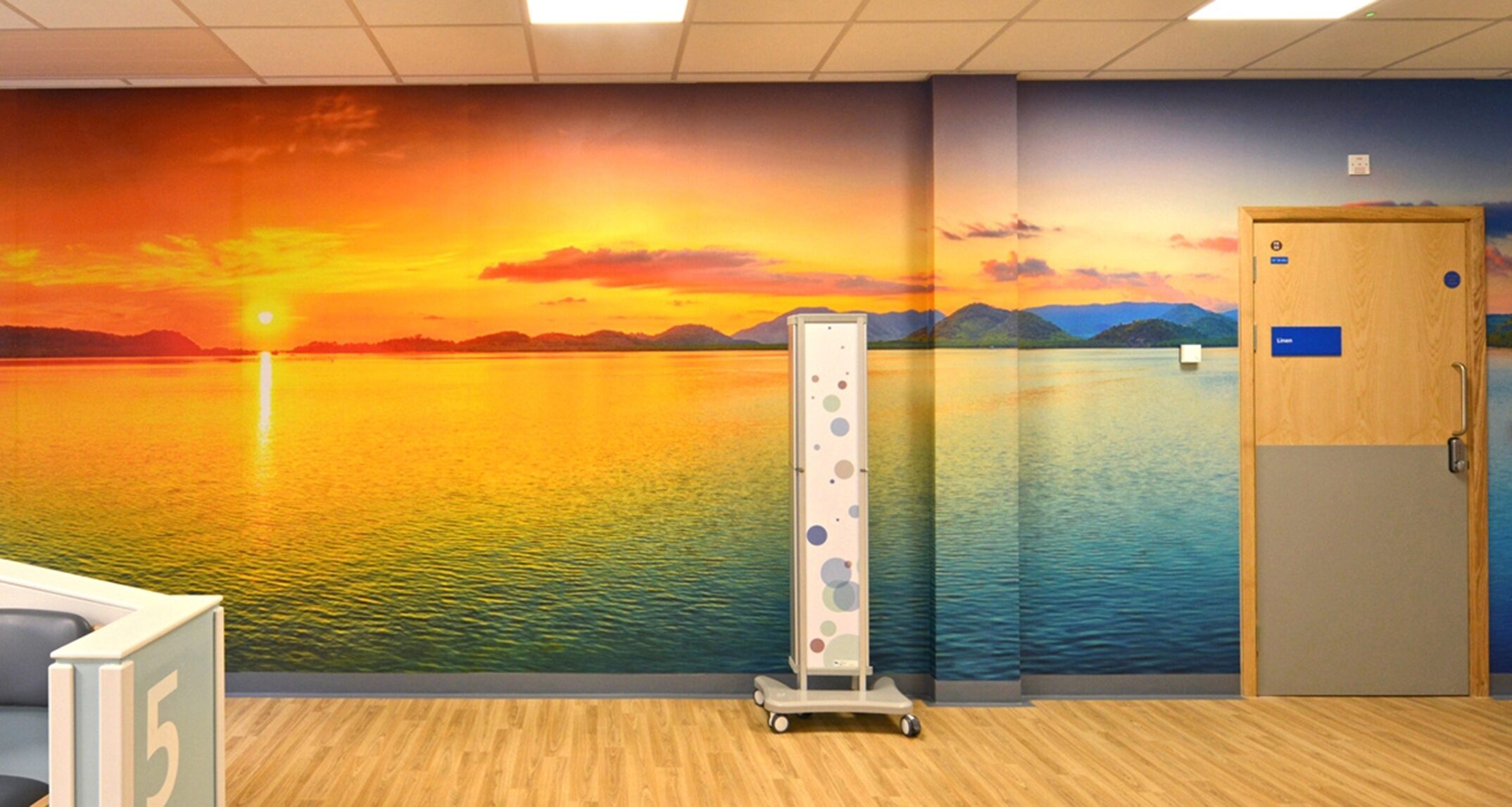
Research shows that even when just images of nature are incorporated into the design of healthcare facilities, patient stress decreases. Royal Bournemouth Hospital Jigsaw Building - Stride Treglown
A similar study of another dental setting by Heerwagen found that on days when a large nature mural was displayed in the waiting room, patients showed decreased stress levels as compared to days when the mural was not present. Another experiment conducted with blood donors found that those who viewed a wall-mounted television showing a tape of nature had lower blood pressure and pulse rates than those donors who watched a tape of an urban setting or even a talk or game show.5 These examples illustrate that even when a direct connection to nature is not available – things like views to the outdoors, natural features like plants and water, etc. – even imagery of nature has documented positive benefits on patient health and well-being.
An Evolutionary Argument for Biophilic Design in Healthcare
Perhaps in healthcare more so than in any other setting, evolutionary tendencies influence humans’ responses to their built environments. Stress is a major determining factor of healing rates. When we look back at pre-modern humans, we understand how significant stressors influenced their daily lives. The constant encounters with threats and risks against simply surviving forced our ancestors to learn to adapt and heal quickly. Energy needed replenishing faster after experiencing “fight-or-flight” situations.6 As such, today’s healthcare facilities need to evaluate the modern-day equivalents of these past stressors in their designs and respond accordingly.
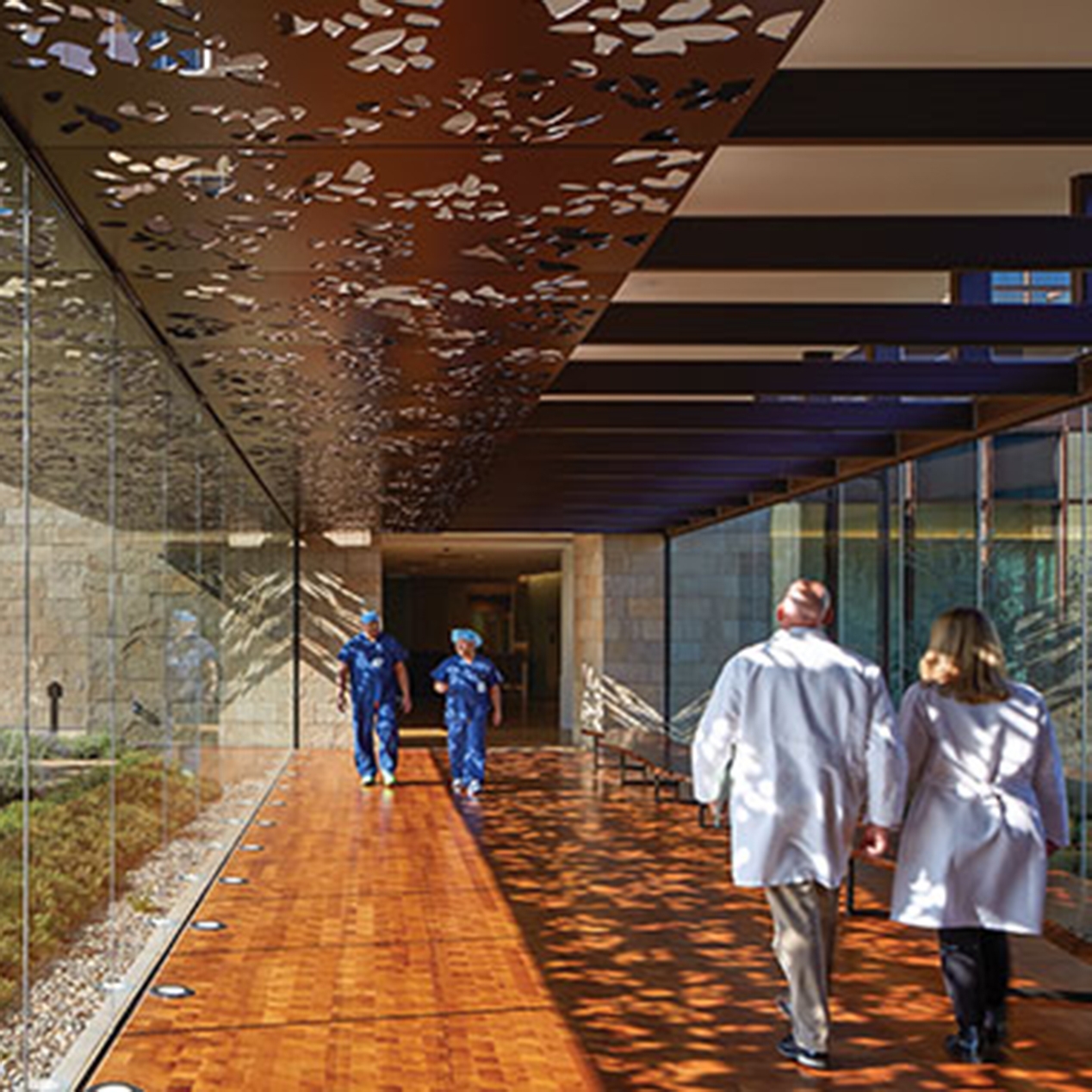
Healthcare staff performance and job satisfaction are positively impacted when views to features like outdoor gardens are incorporated into the design. Palo Alto Medical Foundation, San Carlos Center – NBBJ
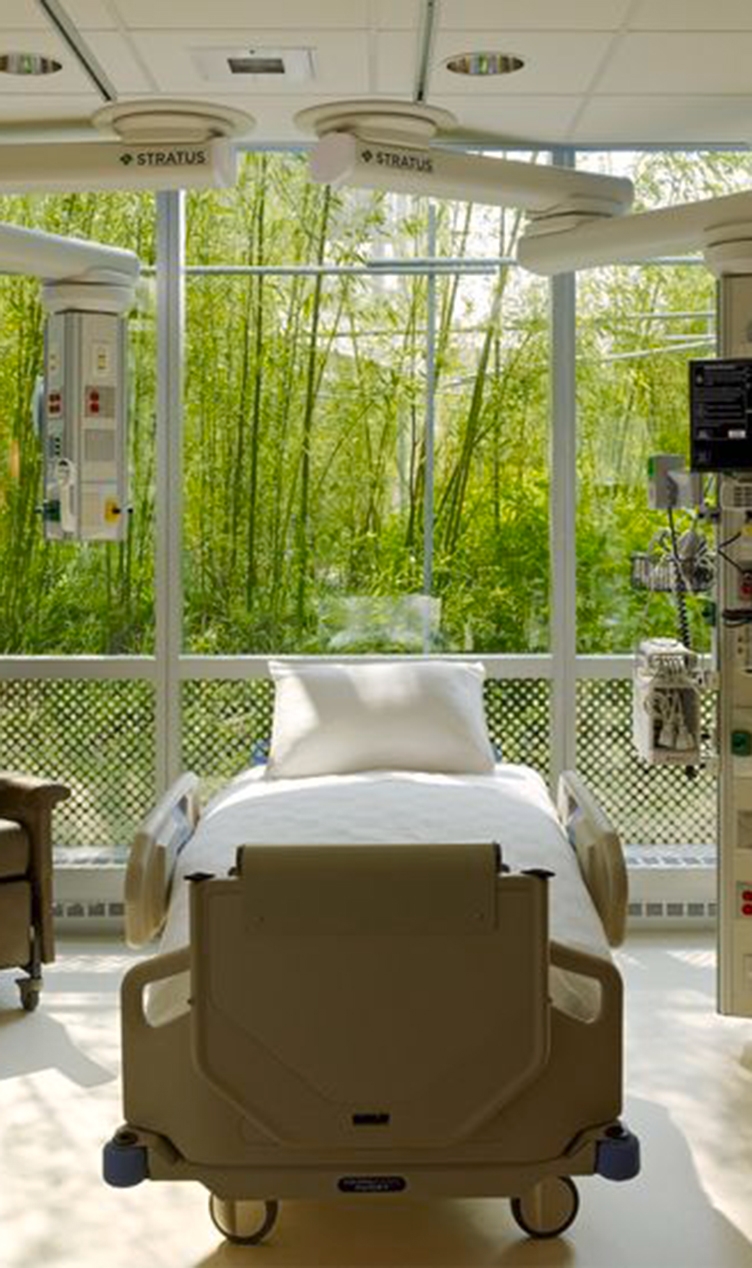
Massachusetts General Hospital Lunder Building – NBBJ
The Economics of Biophilia
For most major building project types, cost factors heavily into the design decision-making process. As such, the availability of concrete evidence regarding the benefits of biophilic design in healthcare settings is the only way to effectively promote implementation.7
Patient recovery outcomes are an obvious economic benefit that hospitals and other health facilities consider when making design decisions. Another critical piece, though perhaps less apparent, are the effects of biophilic design elements on doctors, nurses, and other staff members. While studies relating to healthcare staff are limited, it is recognized that this population is important when making design considerations.8 A healthcare facility may consider the benefits of including an outdoor garden that could have positive effects on worker absences, turnover rates, work-related stress, and overall job satisfaction.9
Conclusion
The myriad research available on biophilic design in healthcare settings makes it clear that connecting with nature during treatment and recovery is of great benefit to patients. Allowing for a more holistic healing process, incorporation of these design elements cannot be discounted. As we continue to make advances in medical technology, we must concurrently look to our basic human roots to improve healthcare environments as a whole.
References
1 Huisman, E., Morales, E., Hoof, J. V., & Kort, H. (2012). Healing environment: A review of the impact of physical environmental factors on users. Building and Environment, 58, 70-80. doi:10.1016/j.buildenv.2012.06.016.
2 Edward O. Wilson, Biophilia (Cambridge, MA: Harvard UP, 1984): 1.
3 Stephen R. Kellert, Biophilic Design: The Theory, Science, and Practice of Bringing Buildings to Life (Hoboken, NJ: Wiley, 2008): vii.
4 Huisman, E., Morales, E., Hoof, J. V., & Kort, H. (2012). Healing environment: A review of the impact of physical environmental factors on users. Building and Environment, 58, 70-80.
5 Stephen R. Kellert, Biophilic Design: The Theory, Science, and Practice of Bringing Buildings to Life (Hoboken, NJ: Wiley, 2008): 92.
6 Stephen R. Kellert, Biophilic Design: The Theory, Science, and Practice of Bringing Buildings to Life (Hoboken, NJ: Wiley, 2008): 88-90.
7 Stephen R. Kellert, Biophilic Design: The Theory, Science, and Practice of Bringing Buildings to Life (Hoboken, NJ: Wiley, 2008): 88.
8 Huisman, E., Morales, E., Hoof, J. V., & Kort, H. (2012). Healing environment: A review of the impact of physical environmental factors on users. Building and Environment, 58, 70-80. doi:10.1016/j.buildenv.2012.06.016.
9 Stephen R. Kellert, Biophilic Design: The Theory, Science, and Practice of Bringing Buildings to Life (Hoboken, NJ: Wiley, 2008): 88.
